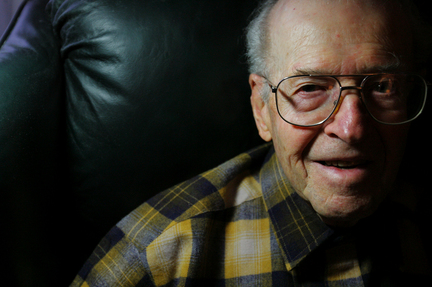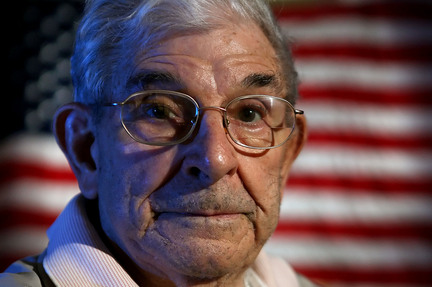- Joined
- Oct 10, 2009
- Messages
- 3,779
- Likes
- 2,666
7 Dec 1941"A DATE THAT WILL LIVE IN INFAMY"


Burning battleships Arizona, West Virginia, and Tennessee
In June 1940, President Franklin Roosevelt of the United States moved the American Pacific Fleet from San Diego to Pearl Harbor as a response to Japan's aggression toward China, followed by the embargo of vital raw materials to the newly industrialized Japan. It was meant to put pressure on Japan to ease the aggression on her neighbors, but it instead made Japan to eye the South Pacific with even greater desire: islands rich with oil, rubber, tin, and tungsten. The presence of the American fleet at the center of the Pacific Ocean did not do much to calm the Japanese military, which essentially controlled the government at that point. Instead, it threatened Japan into striking first.
Admiral Isoroku Yamamoto, the commander of the fleet, was tasked with constructing a plan to strike down the American fleet in surprise, crippling the fleet so much that Japan would be able to dominate the Pacific. While Yamamoto truly believed that it was possible to surprise the American Pacific Fleet and destroy all the battleships and carriers with one quick strike, he was an opponent to the idea of attacking the United States. He believed that unless Japan had a way to march her armies straight to Washington DC, it was not wise to engage in war with United States for an extended period of time. Nevertheless, he carried on his duties and devised a plan with his staff. In October 1941, the Japanese naval general staff gave final approval to Yamamoto's general plan of attack. In November 1941, he added Pearl Harbor to the list of targets. Yamamoto's strike plan, with much contribution from Commander Genda, called for fighters, torpedo bombers, and dive bombers from six carriers, in other words it would be the largest air strike the world would have seen to date. The plan called for multiple waves of attack, systematically targeting and destroying specific ships, airfields, aircraft, and drydocks. In order to effectively use torpedoes in the shallow Pearl Harbor, the torpedoes were fitted with fins so that they would run closer to the water's surface without diving into the mud. Yamamoto assigned the task of attacking Pearl Harbor to Vice Admiral Chuichi Nagumo. A total of 24 vessels supported the six aircraft carriers in its journey from Tankan Bay of Kuril Islands in Japan toward Hawaii via a northern route on 26 November 1941.
Pearl Harbor was a complex body of water on the island of Oahu in Hawaii, which was annexed by the United States in the early 1900s after a need for a navy base in the center of the Pacific arose (actual base construction started as early as 1887 when Hawaii was still under the sovereign of the Hawaiian Kingdom). In 1908, the Pearl Harbor Naval Shipyard was established, and Schofield Barracks of the Army in 1909. It was one of the largest military bases of the United States at the time WW2 started; less than two years ago it became the base of the Navy's Pacific Fleet, and the Army at this time maintained 43,000 soldiers here. In April 1941 the Army Chief of Staff assured President Roosevelt: "The Island of Oahu, due to its fortification, its garrison, and its physical characteristics, is believed to be the strongest fortress in the world".
When the Japanese fleet departed from the Kuril Islands, Nagumo had ordered any non-Japanese vessel that came in contact with the strike fleet was to be quickly destroyed before they could warn anyone of the attack. On 5 Dec 1941, the situation happened. Packed full with M2 medium tanks and other supplies needed in the war against Germany, the Russian transport Uritsky was en route for the eastern Russian port city of Vladivostok. All guns of the Japanese fleet were trained on the transport, but Nagumo decided not to give the order to open fire, for he knew the top officials at Tokyo wished to maintain the non-aggression pact between Russia and Japan. It was never proven, but some sources indicated that the Uritsky did indeed radio Russian authorities of the finding, and the Russians notified the Japanese fleet that if Uritsky was to be spared, Russia would not report the incident to anyone, namely, the United States. Had this exchange really taken place, it appeared that both sides held their ends of the bargain; Urtisky arrived at Vladivostok safely, while the Japanese fleet sailed otherwise undetected across the Northern Pacific. Some speculated that the Russian silence might be due to Moscow's wish for the United States to enter WW2, thus eliminate Japan as a threat on Russian Siberia.
On 7 Dec 1941, the first contact was made by United States Coast Guard ship Condor at 0350 less than 2 miles southwest of the Pearl Harbor entrance buoys. After receiving visual warning from Condor at 0357, USS Ward began patrolling the harbor entrance. At 0637, Ward sighted the periscope of a Japanese submarine. Ward attacked the area with depth charges as destroyer USS Monaghan set sail to join her in the submarine hunt. At 0740, a telephone call was made to the office of United States Navy Pacific Fleet commanding officer Admiral Husband Kimmel to notify the submarine contact; by that time. In hindsight, it was the last chance for the Americans to prepare against the attack, but to Kimmel's defense, he had not been give many clue what was to come.
Just before 0800, the Japanese aircraft arrived over Hawaii. When the mass of dots appeared on the American radar screens, it was thought that they were friendly bombers coming in from the mainland. At 0755, the now-well-known message "ENEMY AIR RAID - NOT DRILL" was sent from the Navy Yard Signal Tower. As that message was sent, Japanese torpedo bombers were already lining up to battleship row.
The first targets were air fields. At 0755, Japanese dive bombers dropped bombs (mainly incendiary) and strafed Hickam Field and the Naval Air Station on Ford Island. Many American aircraft were caught on the ground, unable to take off to take off to meet the attackers in the air. At 0758, "AIR RAID, PEARL HARBOR. THIS IS NOT DRILL!" was broadcast to all ships in the area. Nearly simultaneously, another group of attack aircraft attacked the battleships moored on the south side of Ford Island in the center of Pearl Harbor. The torpedoes and bombs hit with precision. The most spectacular hit was the armor piercing bomb that exploded deep within the belly of the battleship USS Arizona, which ignited the forward ammunition magazine, engulfing the ship in a fierce ball of fire. Anti-aircraft machine gun fire commenced very quickly after Japanese aircraft were sighted, while larger caliber weapons took anywhere from three to seven minutes before they began firing. At 0812, the Pacific Fleet received word that "HOSTILITIES WITH JAPAN COMMENCED WITH AIR RAID ON PEARL HARBOR", but it was no news to those present.
Between 0825 and 0840, Japanese aircraft continued to dominate the skies over Pearl Harbor, although bombing activities largely ceased.
At 0840, 30 Japanese horizontal bombers appeared, mostly still targeting battleships, supported by 18 dive bombers. Damage from this attack was reported as "serious".
With careful planning on part of Yamamoto and his staff, and perfect execution of Nagumo and his air command, the surprised Americans suffered greatly. More than 90 ships were present at Pearl Harbor, and few larger warships escaped unharmed. Battleship USS West Virginia sank very quickly, while the USS Oklahoma turned over before sinking. The 0810 bomb hit on USS Arizona previously mentioned took the lives of 1,000 sailors. Battleships California, Maryland, Tennessee, and Nevada all suffered various degrees of damage during the raid. At 0830, the Nevada attempted to get underway, but realized if she was sunk at the harbor opening, it would disable the base for months to come; USS Nevada's captain changed his mind of fleeing the harbor, and changed course to beach the ship at Hospital Point.
By 0940, most Japanese aircraft had left the vicinity, but American anti-aircraft fire continued to fire at any sign of hostile movement; tense atmosphere led to a few friendly fire incidents where American fighters that finally got a chance to take off were shot down. By 1000, the skies over Pearl Harbor were clear. Final tally revealed that five of eight battleships at Pearl Harbor were sinking, sunk, disabled, or heavily damaged. A total of 21 American ships were sunk. 188 aircraft were destroyed, and 159 were damaged. Over 2,400 American were killed (this figure includes civilian deaths of 68 caused by friendly fire: American anti-aircraft shells were landing in the city of Honolulu), with minimal Japanese casualties (29 planes shot down and 6 midget submarines lost).
In hindsight, the Americans could had been more vigilant, therefore the ships might possibly be able to sortie out of the harbor so that they would have a fighting chance. However, it should also be noted that had they sortied, and if the Japanese were to still have won the battle, the American ships would be sunk in deep water where they would be lost forever. As actual history had turned out, the five battleships sunk in the harbor during the attack were sunk in shallow water, allowing them to be raised, repaired, and underway to fight the Axis powers merely months later.
The United States was lucky that the aircraft carriers were not in port. Admiral William Halsey and the Enterprise were en route back to Pearl Harbor after delivering fighters to Wake Island. Rear Admiral Newton was en route with the Lexington toward Midway Atoll, delivering 25 scout bombers. And finally, the Saratoga left Pearl Harbor for maintenance in the continental United States. The carriers were among the primary objectives to destroy in Yamamoto's plan.
While the attack on Pearl Harbor took place, a Japanese detachment near Philippines were preparing to launch an invasion force on American bases at Philippines, starting the Japanese advance toward the South Pacific.
On the diplomatic side, Japan was supposed to declare war on the United States at precisely 30 minutes before the attack started. However, due to decryption difficulties, the Japanese embassy was not able to deliver the message until the attack had already started. President Roosevelt took advantage of the sequence of events, and marketed the concept that the attack was a unprovoked sneak attack, and used that marketing concept to rally the previously isolationist Americans into war against the Axis powers.
Blame for the total surprise of the attack was placed on the shoulders of Admiral Husband Kimmel and Lieutenant General Walter Short, the top commanders at Pearl Harbor at the time. The attack on Pearl Harbor faced nine investigations, with the conclusion of dereliction of duty by Kimmel and Short. The United States Senate cleared their names in 1999, after both commander's deaths, but to this day the Department of Defense continue to lay blame on these two scapegoats.
Sources: Armchair Reader World War II, The Pacific Campaign, US Army-Pacific, US Navy Naval Historical Center, US Navy Report of Japanese Raid on Pearl Harbor, Wikipedia.








































